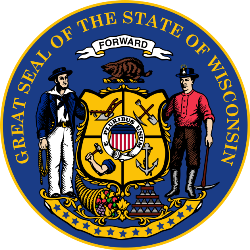Will Wisconsin Make History With Another 2024 Presidential Nail-Biter?
No state’s popular vote winner has been decided by less than a percentage point in three straight cycles during the two-party era

One state that is understandably populating all of these lists is Wisconsin.
The fight for the Badger State’s electoral votes has been decided by single digits in 12 of the last 14 presidential elections since 1968 and, even more impressively, by less than a single point in four of the last six elections since 2000.
Al Gore defeated George W. Bush by 0.2 points in 2000, John Kerry nipped Bush by 0.4 points in 2004, Donald Trump beat Hillary Clinton by 0.8 points in 2016, and Joe Biden edged Trump by 0.6 points in 2020.
Only six other states have seen their presidential vote decided by less than a point in four or more cycles – and none of these, outside of Wisconsin, within a 20-year period:
- California (nine of 43 cycles, 20.9 percent): 1860, 1868, 1880, 1892, 1896, 1912, 1916, 1948, 1960
- Maryland (six of 49, 12.2 percent): 1828, 1832, 1860, 1872, 1904, 1908
- Missouri (five of 49, 10.2 percent): 1860, 1908, 1956, 1960, 2008
- Tennessee (four of 48, 8.3 percent): 1844, 1952, 1956, 1980
- Kentucky (four of 49, 8.2 percent): 1896, 1920, 1952, 1996
- Ohio (four of 49, 8.2 percent): 1892, 1944, 1948, 1976
Wisconsin is also just the third state with presidential contests decided by less than a point in back-to-back cycles.
Maryland did so in 1828 (John Quincy Adams over Andrew Jackson by 0.5 points) and 1832 (Henry Clay over Jackson by four votes) as well as 1904 (Teddy Roosevelt over Alton Parker by 51 votes, though Parker won most of the Electoral College votes) and 1908 (William Taft over William Jennings Bryan by 0.3 points with Bryan carrying most EC votes). [Note: Maryland’s 1824 election between four Democratic-Republicans was also decided by 0.3 points].
California did so in 1892 (Grover Cleveland over Benjamin Harrison by 147 votes) and 1896 (William McKinley over Bryan by 0.6 points) as well as 1912 (Roosevelt over Woodrow Wilson by 174 votes) and 1916 (Wilson over Charles Hughes by 0.4 points).
If Wisconsin’s presidential vote is decided by less than a percentage point again in 2024, it will mark the first time during the modern two-party era (1828+) that a state has hosted such a nail-biter in three consecutive cycles.
Overall, 89 of the 2,103 presidential elections across the 50 states and Washington D.C. since 1828 have been decided by less than a point, or 4.2 percent.
Sixteen states (plus the District of Columbia) have never hosted elections this close: Alabama, Alaska, Colorado, Idaho, Kansas, Louisiana, Mississippi, Montana, Nebraska, Nevada, Oklahoma, Texas, Utah, Vermont, Washington, and Wyoming.
Of those states only Nevada seemingly has the potential to do so in 2024 (barring a blowout nationwide victory by one nominee who closes the gap to make slightly competitive states very competitive).
The presidential election with the most states decided by less than a point was John Kennedy vs. Richard Nixon in 1960 with six: Hawaii, Illinois, Missouri, New Mexico, and New Jersey were won by Kennedy with Nixon carrying California.
At least one state has been decided by a fraction of a percentage point in every presidential election since 1992.
Ten cycles did not produce a single state with such a narrow margin: 1836, 1848, 1856, 1900, 1924, 1932, 1936, 1968, 1972, and 1988.
Follow Smart Politics on Twitter.

It is worth noting that the vote here would not necessarily reflect the national tally in ’24; e.g. BHO won here by a double-digit margin in 2008 even as his national vote was only 7%, whereas the reverse was the case for Reagan in both 1980 (5% v 10% nationally) and 1984 (7% v 18%).
Which scenario is more likely next year, the D ticket carrying WI while losing GA, AZ, NV, and/or NE-02, or the ticket winning without the Badger State by substituting the aforementioned venues for the state? (At its core, this is about whether the Caucasian ethnic unionized rank-and-file voters or the non-Caucasian metropolitan voters outside the so-called rust belt region are more likely to vote for President Biden. As well, the question more or less assumes that NC and ME-02 will remain in the R column – and that PA and MI will remain in the D column.)
[…] Will Wisconsin Make History With Another 2024 Presidential Nail-Biter? […]